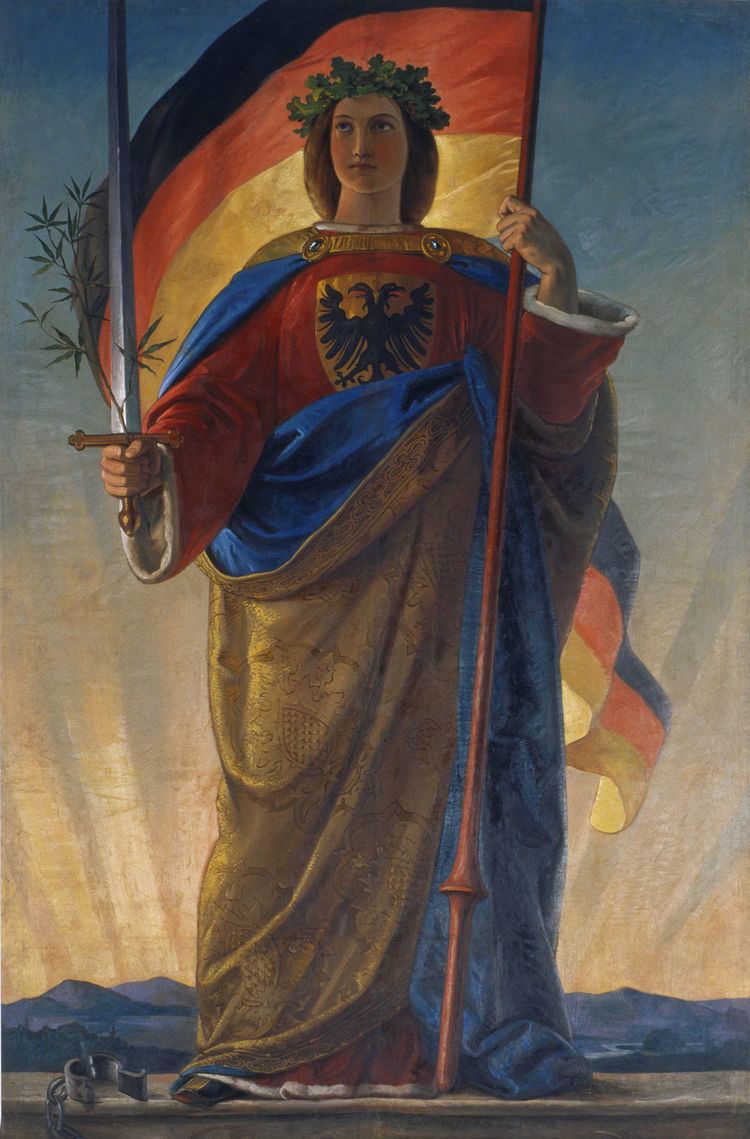Created 1848 | ||
 | ||
Germania is a painting created at the end of March 1848 during the Revolutions of 1848. This allegorical figure is represented with the imperial Eagle, oak leaves (symbols of German strength), an olive branch (as a sign of peace) or a cannabis branch, and a banner.
It was hung in the National Assembly in Frankfurt's Paulskirche, where it concealed the organ. It was meant as a symbol of a united democratic Germany.
After the revolution, the painting belonged to the German Confederation but was not exhibited any more. After the dissolution of the German Confederation, the Bundesliquidationskommission gave the painting and other items of the National Assembly to the Germanisches Nationalmuseum in Nuremberg, in 1867.
The actual painter is unknown. Traditionally the painting is attributed to Philipp Veit since ca. 1900. Apparently its allegorical language draws from Veit's Germania painting from 1834–1836. According to Rainer Schoch it might be a collaboration of several artists of the artistic circle Deutsches Haus.
